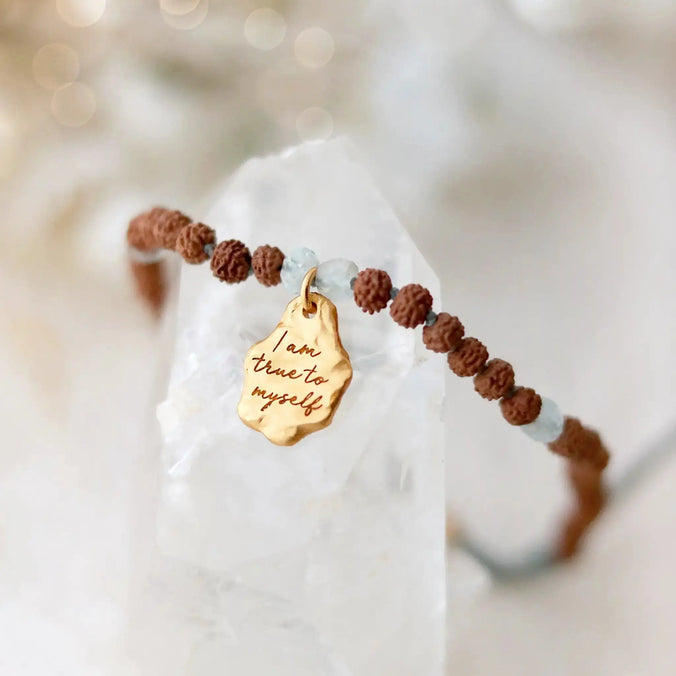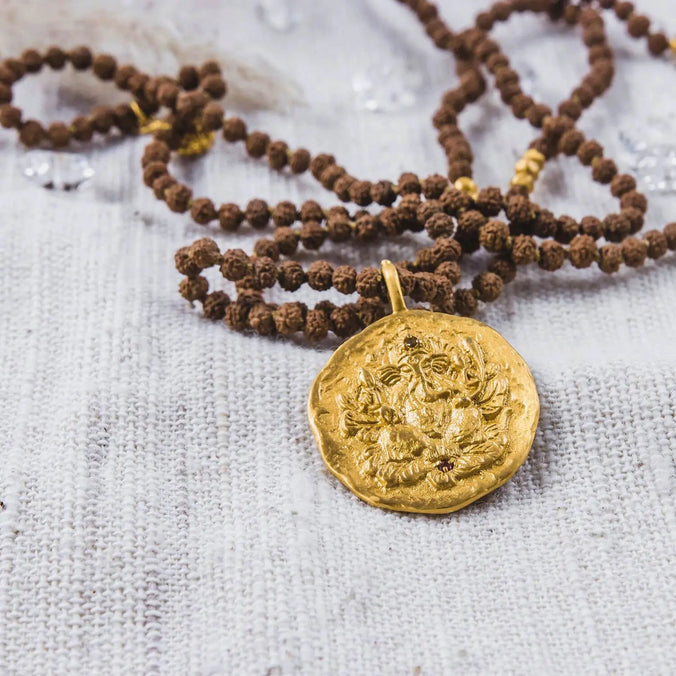
In the realm of spiritual jewelry and items, only few parts hold the mystique and significance of Rudraksha beads. Within the intricate tapestry of spiritual practices, Rudraksha beads stand out as a powerful and revered tool.
Originating from the seeds of the Rudraksha tree, these beads have been revered for centuries for their spiritual and healing properties. We love to work with Rudraksha beads for their sturdiness, longevity and timeless appeal.
The origin of Rudraksha beads
The Rudraksha tree, scientifically known as Elaeocarpus ganitrus, is native to Southeast Asia, primarily found from the foothills of the Himalayas to Nepal, South and Southeast Asia, and also parts of Australiia, Guam and Hawaii.
The term "Rudraksha" is a Sanskrit compound, where "Rudra" refers to Lord Shiva, and "Aksha" means eye. Legend has it that these beads originated from the tears shed by Lord Shiva upon witnessing the suffering of humanity.
The story behind Rudraksha
According to Hindu mythology, the Rudraksha beads have a fascinating origin associated with Lord Shiva. The tale goes that Lord Shiva, the supreme god of destruction and transformation in the Hindu pantheon, entered into a deep state of meditation known as "Samadhi" for thousands of years. During this intense meditation, he closed his eyes to the material world and became absorbed in the inner realms of consciousness.
As Lord Shiva continued his meditation, the state of tranquility and divine bliss he experienced was so profound that it touched the very core of his being. However, the divine omniscience of Shiva allowed him to witness the pain, suffering, and hardships faced by humanity on Earth. Overwhelmed by a deep sense of compassion and empathy, tears began to flow from his closed eyes.

These tears, filled with the essence of Lord Shiva's compassion, fell to the Earth. Upon contact with the sacred ground, they transformed into the seeds of the Rudraksha tree. The Rudraksha tree, also known as the "Blueberry Bead Tree" then bore fruits containing these seeds, which became known as Rudraksha beads.
Another legend tells of the demon Tripurasura, who performed severe penance to obtain a boon of immortality. However, upon receiving this gift, he became a menace to the gods and humans alike. Lord Shiva, moved by the prayers of the distressed, intervened by annihilating Tripurasura. The ashes of the demon fell to the ground and gave rise to the Rudraksha tree. The beads from this tree are believed to carry the essence of Shiva's victory over evil and came to symbolize the compassion and benevolence of Lord Shiva, making them powerful symbols of protection and spiritual strength.
The symbolism of Rudraksha beads
Rudraksha beads are often used as prayer beads in Hinduism, Buddhism, and other spiritual traditions. The number of facets, or "mukhis," on a Rudraksha bead determines its significance and the specific benefits it offers. The most common variety has five facets, symbolizing the five elements – earth, water, fire, air, and ether – that constitute the human body.
Each bead is believed to possess unique healing properties, promoting physical, mental, and spiritual well-being. The wearer experiences a sense of tranquility and balance, and the beads are thought to enhance meditation, concentration, and self-awareness.

The stories symbolize Lord Shiva's profound connection with the well-being of the world and his willingness to alleviate the suffering of humanity. The tears of Lord Shiva, turned into Rudraksha beads, are seen as a divine gift to help individuals on their spiritual journey, providing a means to attain inner peace, mental clarity, and spiritual growth.
In essence, the story of Rudraksha beads with Lord Shiva embodies the intertwining of compassion, spiritual consciousness, and the tangible connection between the divine and the earthly realm. It adds a layer of sacredness to these beads, making them more than just physical objects but conduits of spiritual energy and transformation.




